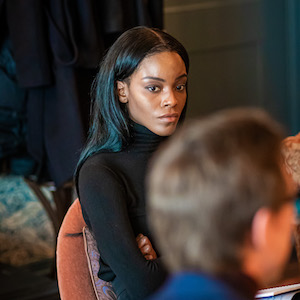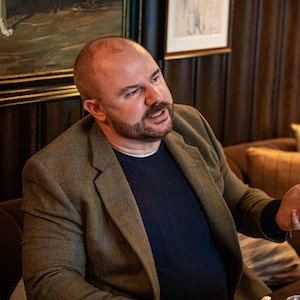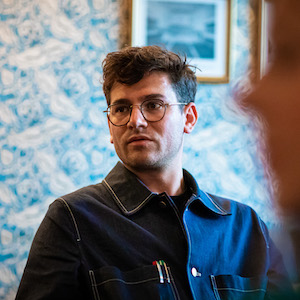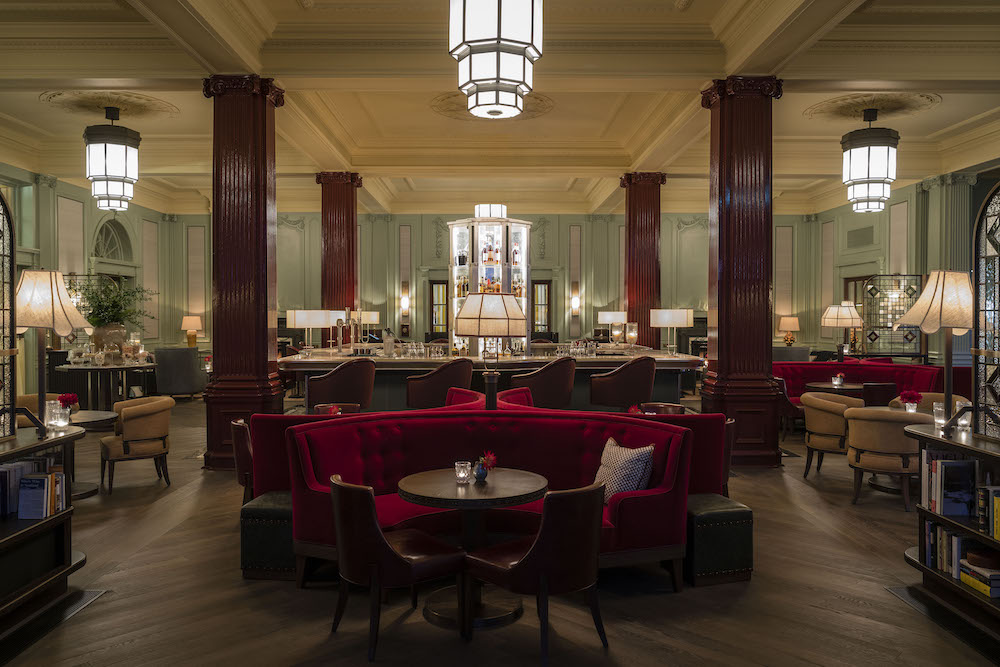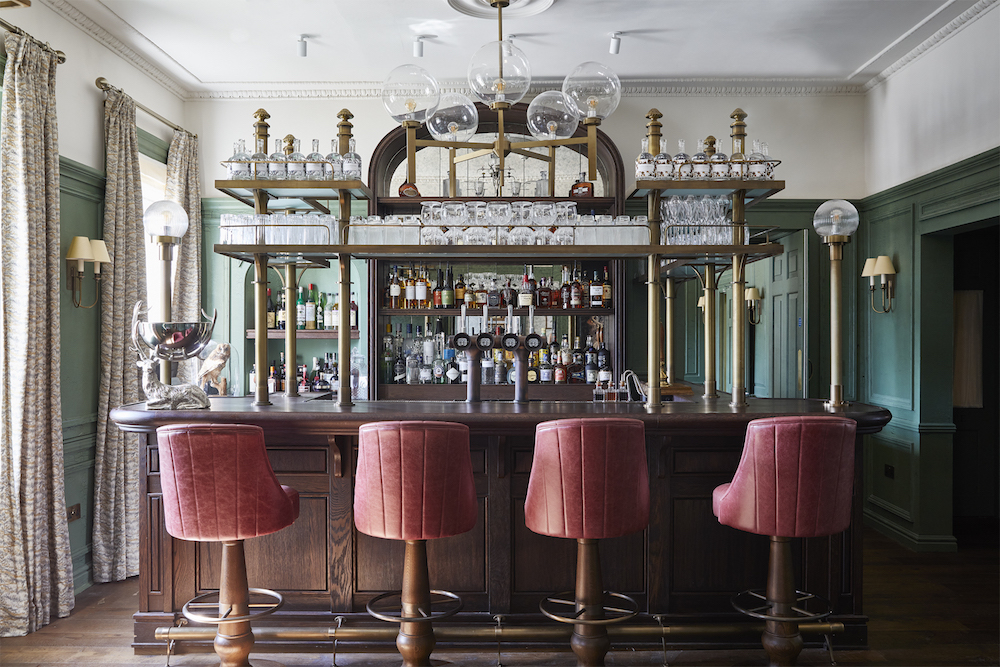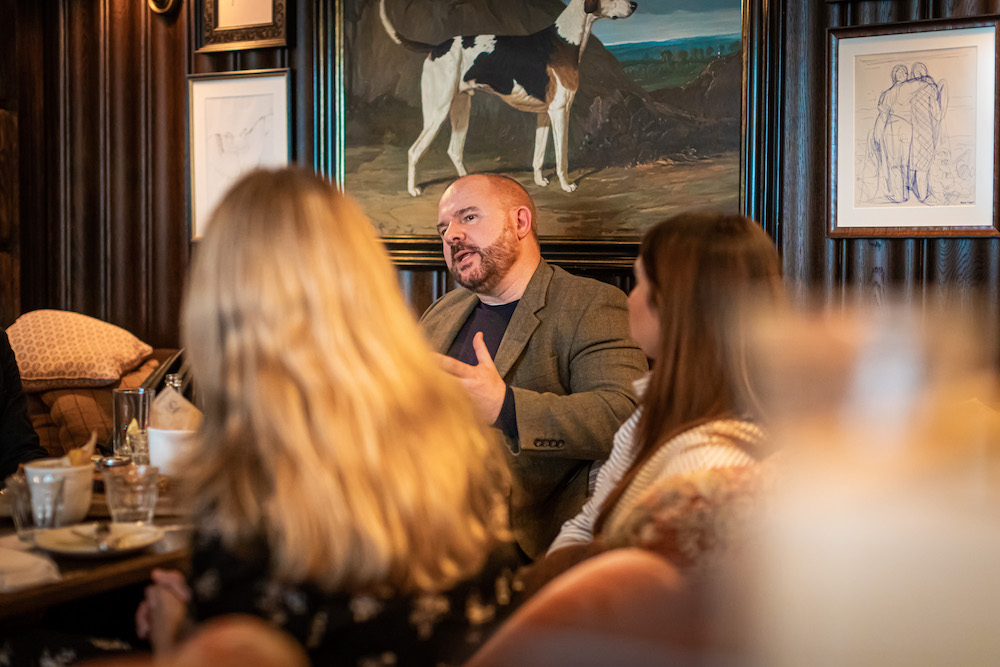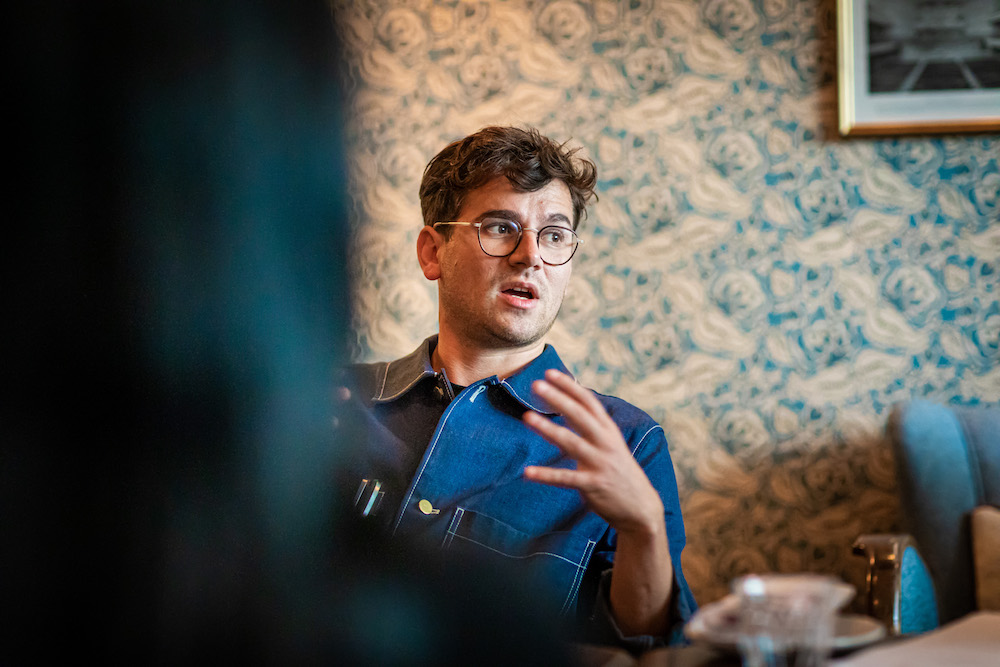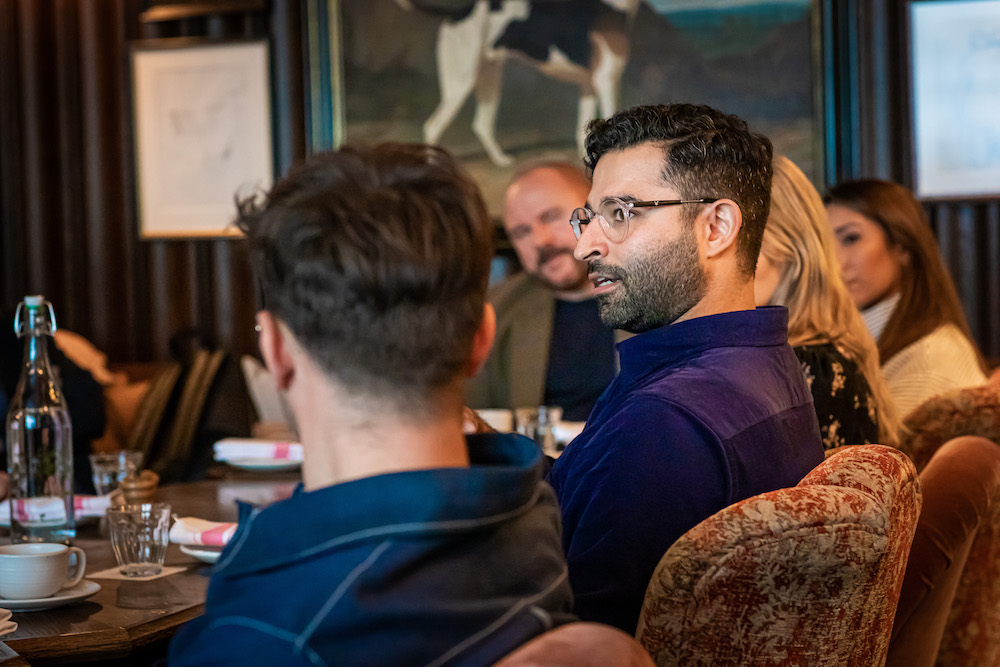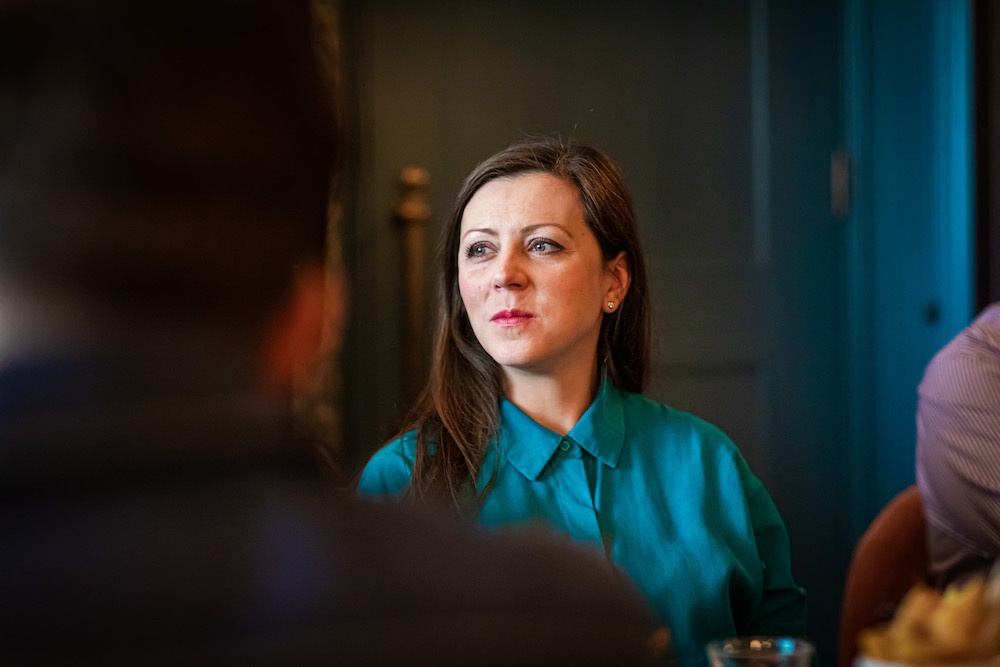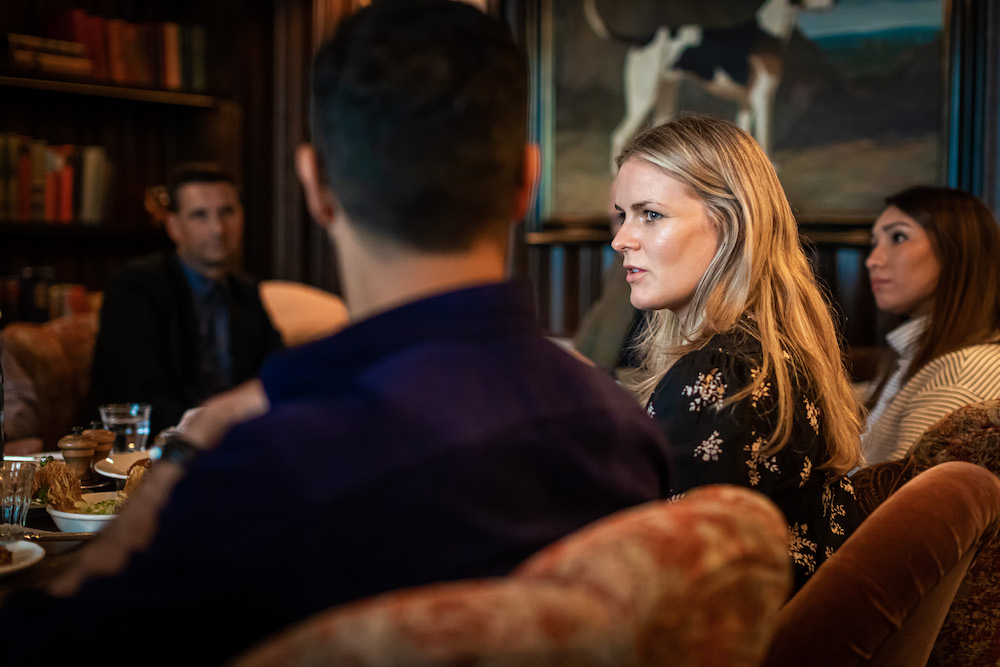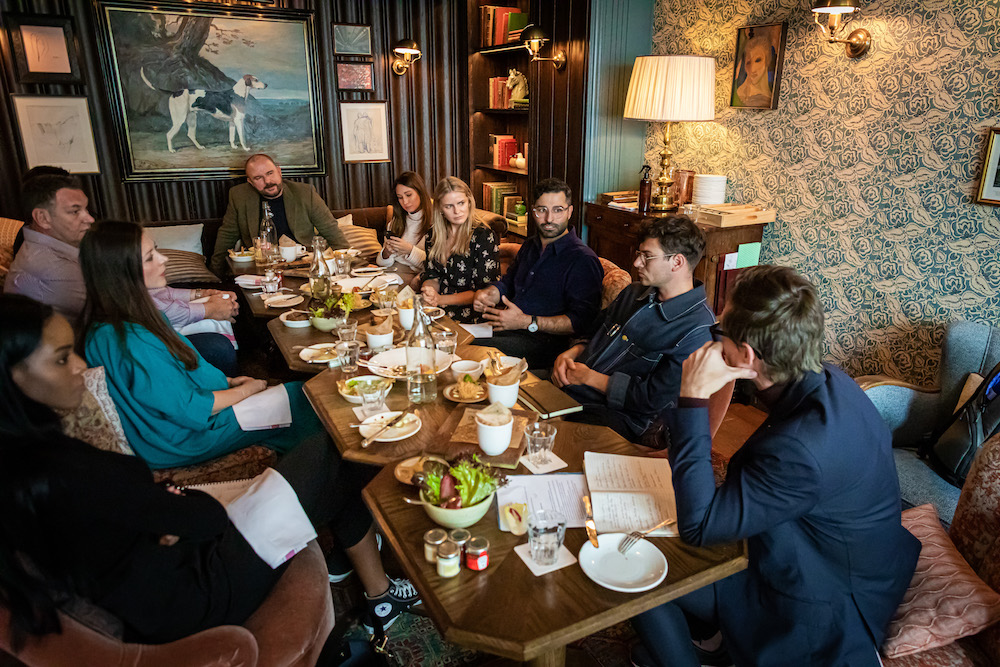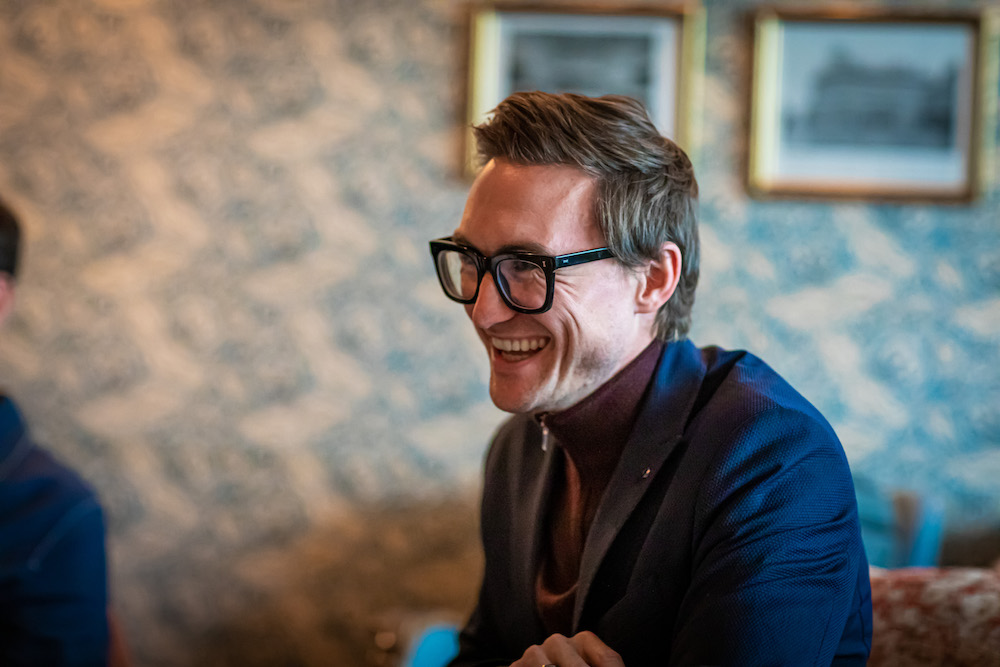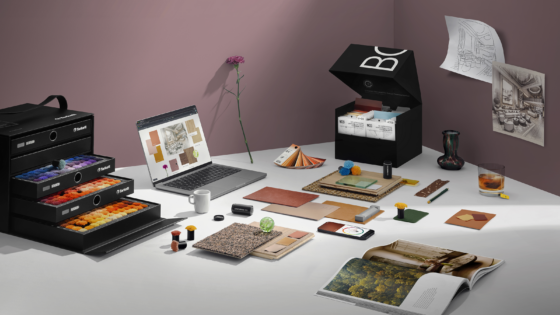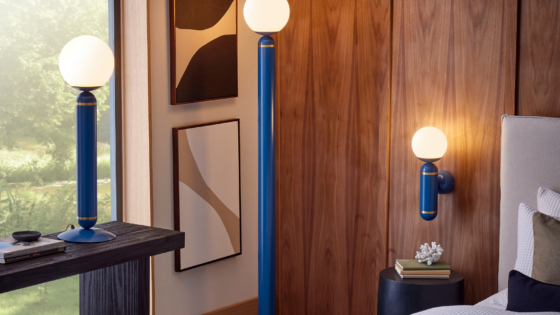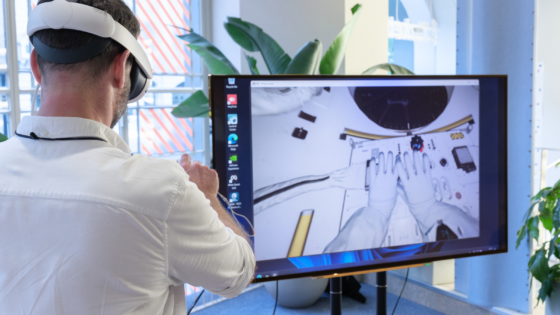In Hotel Designs’ first live roundtable since the beginning of the pandemic, in association with Dernier & Hamlyn, editor Hamish Kilburn gathered leading interior designers to discuss the art of lighting in 2021 and beyond – from downlights to pendants and pitfalls in-between. Scroll down to meet the panellists and to catch the conversation…

To celebrate Hotel Designs putting the spotlight on lighting this month – and following the recent virtual roundtable on ethical lighting – the editorial team along with Dernier & Hamlyn invited a handful of designers together to explore where designers’ are putting their focus when decoratively lighting hotel spaces.
Meet the panel:
- Mark Harper, Head of Design, Dernier & Hamlyn
- Una Barac, Founder, Atellior
- Mimi Shodeinde, Designer, Miminat Designs
- Akram Fahmi, Co-Founder, London Design House
- Guy Oliver, Managing Director, Oliver Laws
- Darren Orrow, Director, into Lighting
- Gemma McCloskey, Design Director, Studio Indigo
- Alex Holloway, Co-Founder, Holloway Li
Hamish Kilburn: What key elements should designers focus on when lighting public areas?
Darren Orrow: Lighting is an integral part of the guest journey and experience, it helps tell a story and create the ambience. Lighting treatments should be tailored to suit each area’s function and be controllable from morning to evening. The colour temperature and warmth of light must be considered in all areas but in particular areas for relaxation, lounging and dining.
With regard to architectural lighting it is about the light effect as opposed to seeing the light fixtures, downlights are often best kept to a minimum. Many fantastic lighting schemes are created from predominantly decorative and integrated lighting treatments, with accent lighting only used to highlight specific task areas and displays where they can add highlights and drama. Decorative lighting is so important in public spaces from both the point of view of their visual aesthetic and the contribution of light to the overall ambience. Table lights and standard lamps encourage guests to sit and relax.
There are a number of hotel operators with lighting guidelines that need to be followed for areas such as reception and check in, which need to be well lit to carry out admin tasks, often overnight when the rest of the lobby lighting is at a very low level / in sleeper mode. So, local lighting to such task areas is preferred in order to not overlight the area. Stair areas also have minimum light level and uniformity requirements.
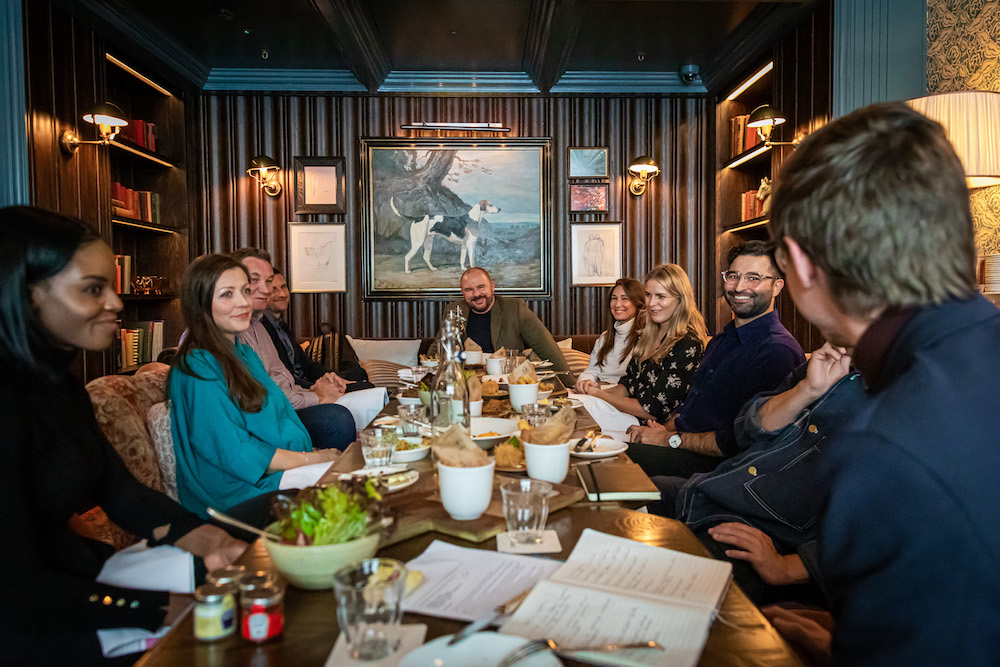
Image caption: Editor Hamish Kilburn leading the conversation with leading designers on the art of lighting. | Image credit: Dish Creative/James Munson
HK: When pitching to clients, how much detail do designers go into regarding lighting schemes?
DO: I would say that in the last eight years, lighting designers are being engaged in the project really early on in the process. While the interior designer has an initial vision before we are involved – establishing the overall ambiance and decorative details –the best schemes are the ones where a lighting designer is involved in the concept stages of the hotel. Any later than that, then the opportunity to get really creative with lighting becomes limited.
Mimi Shodeinde: With a supplier like Dernier & Hamlyn, I would send them a concept that I have and then the team in the factory come back with suggestions. After this, I will go into the factory and we will together go through drawings and produce models. This is when the concept really develops.
Gemma McCloskey: I think when designers start to look at interior architectural plans and spaces, when they are establishing elements such as the ceiling and wallcoverings, they innately consider where the lighting is going to be integrated. Like Darren said, we also make a conscious decision to stay away from downlights. When looking at the layers of the interior/architecture you start realising which lights would work. Once you have that finalised, and FF&E you can then start allocating where the lighting can be placed before speaking to a lighting consultant in order to qualify how much light we need and advise us on technical details.
Una Barac: From my perspective, we try to get lighting designers on board as soon as we are appointed on large hotel schemes. We do explain to the client that, yes, we have engineers ourselves, but in order to get the successful layering you need a lighting consultant on board straight away. We also recommended that they are kept on board as a guardian role, especially when a contractor can really dumb it down. And if someone is not there keeping a watchful eye on value engineering then all that work can go to waste.
- Image credit: Dernier & Hamlyn/Gleneagles
- Image caption: The bar inside The Elder, Bath. | Image credit: Dernier & Hamlyn
HK: Guy, you have completed simply stunning projects inside iconic, heritage buildings. What have been some of the challenges you have faced – and more to the point, what were the solutions?
Guy Oliver: I think there’s a tendency to over-light spaces. Everyone demonises downlights, but in a banqueting scenario, downlights are a good thing in order to make the food pop on the table. In a beautiful restaurant, they have remote control pin spots because they want to make, for example, the flowers or the food stand out. There are always these wonderful layers of lighting in heritage buildings, such as majestic chandeliers, wall lighting and these modern spots – it creates a really nice juxtaposition.
For me as a designer, it’s all about creating an atmosphere. He is the opposite, he likes to under light a lot of space. Take the Chiltern Firehouse, for example, you’re finding your way around because it’s deliberate to create a dark, moody and sexy ambiance. For me as a designer, I am designing a mise én scene.
I think strip lighting is overused. When you are sitting in a space for a long period of time, linear lighting can burn into your retina. There are other ways you can dramatically light a space, and there’s a hotel in Paris which is a perfect example. Instead of adding that harsh strip lighting under the bar, instead they just added decorative lighting on the shelves, which just highlights certain hotspots. Lighting does not have to be complex. I was in a beautiful palazzo in Malta, where I noticed a single light bulb in the entrance hall, and it was one of the most atmospheric places I have been to because it [the light] bounces off the paintings, mirrors and silver.
“Sometimes lighting can flatten a painting, and it’s really about getting the textures and layering into place.” – Guy Oliver, Managing Director, Oliver Law.
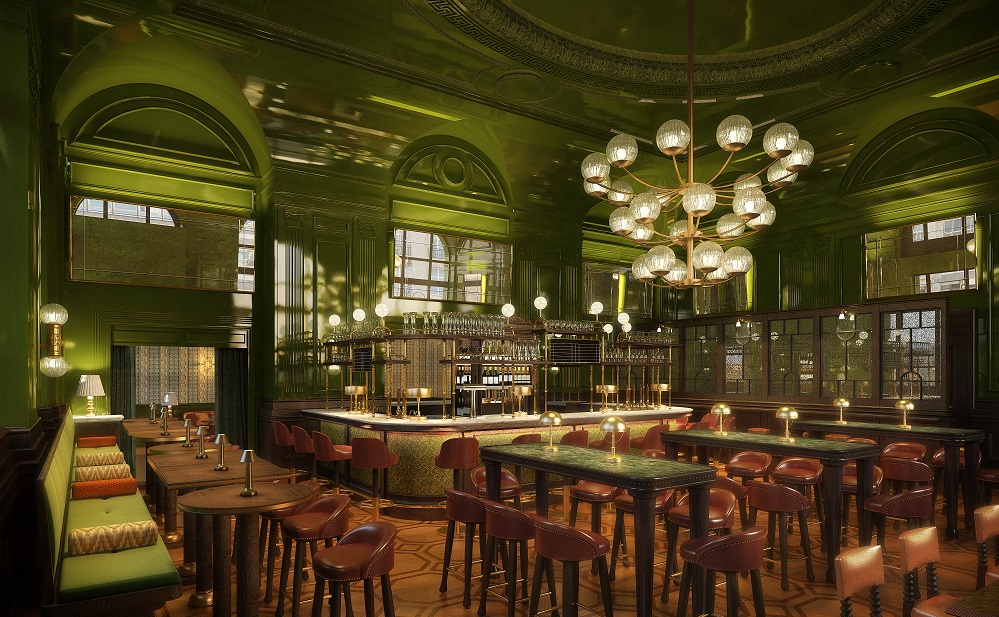
Image credit: The Wigmore/Dernier & Hamlyn
HK: Would you say art is a key area you are looking at when injecting sensitive lighting into a space?
GO: Don’t get me started on picture lighting… you could do a whole roundtable discussion on it. I think you should work with artists in spaces. Designers need to consider the period of the space they are in as well as the period of the object that they are trying to illuminate. Sometimes lighting can flatten a painting, and it’s really about getting the textures and layering into place. Sometimes, the painting itself can become the lighting source.
DO: It also depends on whether it’s framed in glass or the size of the piece. For us, it’s a nightmare when the artwork is chosen too late. The wall light needs to be ordered to match what art is going where. Ideally, we like to ask our clients to map out what’s been supplied and the materials being used.
- Image caption: Guy Oliver explaining the need for versatile lighting when lighting art pieces. | Image credit: Dish Creative/James Munson
- Image caption: Darren Orrow explaining the challenges of lighting artwork. | Image credit: Dish Creative/James Munson
HK: Does this then create a challenge when hotels want to shelter an art residency instead of having fixed pieces?
GO: Sometimes a client doesn’t know what they want, or, as you say it’s a hotel that wants to start an art narrative by launching a residency. Sometimes, clients are collecting art as they go. A simple and flexible solution for this is to put a clock point on a wall where the painting is roughly going to be. From there, you can get any painting and movie it around the clock point so that the picture light is on the frame. Often, I see spaces where the lighting is highlighting the wall and not the painting, which is a classic error in my opinion.
HK: How far can we take lighting in hotel design? It’s come a long way from simply being a decorative element in a room?
MS: Art was my first calling, and this has absolutely enforced my work. As designers, our minds are our largest tool. Essentially, if you can imagine it you can create it. I love working with bespoke products – it’s very rewarding seeing your concepts come to life. We are working on a few new lighting pieces with Dernier & Hamlyn. It’s a lot of fun, seeing my sketches come to life.
Akram Fahmi: I am working with an artist at the moment who made a paint that you simply cannot purchase. We are using this in a restaurant concept with the aim to really tell a story about this paint and artwork. For this, we have inversed the concept by playing with shadows instead of ‘light’, allowing this feature to become a dynamic statement, which changes as different light is added to it.
Working with the artist from the beginning has been a really nice journey. Often, we, as designers, will design a space not knowing exactly what the art is until later on in the process. However, this way, we were able to really ensure that the art, the colour and the lighting really weaved themselves into the DNA of the interior design scheme.
- Image caption: Alex Holloway sharing the benefits of designers understanding lighting components. | Image credit: Dish Creative/James Munson
- Image caption: Akram Fahmi discussing a project that plays on shadows within the lighting scheme. | Image credit: Dish Creative/James Munson
“Often with bespoke lighting we have to really do the leg work to find a supplier who will be able to design the product within the time frame while also being on budget.” – Alex Holloway, Co-Founder, Holloway Li.
MH: As a bespoke manufacturer, our boundaries are set by the imaginations of interior and lighting designers. Some of the more interesting projects we have worked on have included incorporating egg whisks into a pendant for a restaurant, believe it or not. We’ve also used branches from the trees on a golf course to wrap around large parchment shades to help bring the outside feeling into a large space. And for another project we used scent bottles filled with different coloured waters for a perfumery company. We’ve also worked with a vast range of diverse materials such as Vellum, ceramic tiles, plaster, fibre glass, resins and the notoriously challenging shagreen.
Alex Holloway: In a lot of the hotel projects I worked on, we were not given the luxury of a lighting designer in the budget. We are also quite restricted on our FF&E budgets and our time on a project. Often with bespoke lighting we have to really do the leg work to find a supplier who will be able to design the product within the time frame while also being on budget. In one project, I remember speaking to four different manufacturers who simply could not make the lead time.
- Image caption: Una Barac highlighting the demand for short lead times when specifying lighting products. | Image credit: Dish Creative/James Munson
- Image caption: Gemma McCloskey discussing utilising the senses when designing innovative lighting schemes. | Image credit: Dish Creative/James Munson
UB: Even on high-end refurbishment projects, we sometimes don’t get the luxury of a lighting designer. When we work on residential schemes, clients sometimes give us 12 weeks. We need to know, straight up, what your lead times are.
Mark Harper: It all depends how quickly we are brought into the team. If it’s left until the last minute, then of course we have still got to do all the research and development because a lot of what is being specified is unique. Research and development takes time. The sooner designers can get manufacturers on board, the better it is.
AH: What is great about the projects we get to work on is that as well as picking from the mix of decorative off-the-shelf products, you can also develop your own products within your projects. We have set ourselves a task each time we work on a project to create at least one bespoke element, which creates a unique language around the project. In addition to the aesthetic benefits, it also really allows our design team to understand a lot more about lighting as a result – it’s a fantastic learning curve.
“We are being asked to promote biophilic design, which is really looking at all senses.” – Una Barac, Founder, Atellior.
UB: It’s interesting. We have used lighting manufacturers to help us with lighting calculations and lighting advice when the client has chosen not to use a lighting designer. The reason being is that otherwise, engineers will just kill it – the first thing they would say is that decorative does not come into the deluxe level calculations and if you want to pass building control you have to have a certain amount of down-lighting. So, we have used friendly suppliers to help us when faced with these situations.

Image caption: Nobu Restaurant inside Nobu London Portman Square (lighting manufactured by Dernier & Hamlyn). | Image credit: Jack Hardy
HK: There seems to be a louder conversation happening around sensory design at the moment. What’s lighting’s role in this movement?
UB: More and more we are being asked to promote biophilic design, which is really looking at all senses. When doing so, obviously, we have to look at utilising daylight and generally creating a better, healthier environment.
DO: We are also seeing this. The challenge we are seeing is that real plants need the right quality and amount of light in order to stay alive. And sometimes the light needed is not always the light you want in a moody bar or restaurant, for example. So sometimes, we have a different light to switch on when the restaurant is closed. We are also seeing a lot of clients using real plants where you can touch them and faux plants where you can’t, which makes the whole space easier to maintain.
GM: There is a line where it becomes too gimmicky, and sometimes it’s just best to let the light do what it naturally wants to do.
“We are now looking at really simple solutions like a tuneable, soft bedside light.” Darren Orrow, Director, into Lighting.
GO: Anyone who has control over the lighting, from an operational perspective, has to firstly understand atmosphere.
GM: If it’s suitable for the hotel brand, playing on the senses through lighting design can be really interesting. However, for most hotel brands, I fear it will enter a gimmicky territory.
DO: The whole circadian rhythm conversation is really interesting. It’s colour mixing white light. Controls can be expensive but it doesn’t have to be. In a hotel room, I believe the control should be with the guest, to be able to tune their lighting how they want it. We are now looking at really simple solutions like a tuneable, soft bedside light. For other hotel clients, we are looking at integrating the real flame effect from candles into the bathroom lighting scheme, creating a spa-like look and feel in the evening.
AK: I think you need to find a balance. You can inject high-tech software with a user-friendly interface. I think guests miss having a switch, and especially in a hotel, the controls need to be simple yet intelligent.
- Image credit: Dish Creative/James Munson
- Image caption: Editor Hamish Kilburn wrapping things up. | Image credit: Dish Creative/James Munson
HK: And finally, what would you say are your biggest bugbears in lighting design?
DO: For me, as a lighting designer, the wrong lightbulb being used in a beautiful fitting. The specification of the lightbulb needs to come from the lighting design and/or the interior designer.
GO: Lighting lifts. Anything that comes as standard, forget it when lighting lifts. One of the cheapest tricks is to install a light panel, which literally look like you are in an operating theatre. If you put a panel under it, it softens the lighting. Sometimes people add lighting on the skirting, but it’s a very difficult space to light.
GM: Corridor spaces where designers don’t accept darkness, if that’s suitable for the space. Forcing lighting into spaces is often a big pitfall.
Key takeaways from the discussion:
- Most designers prefer to have a lighting designer on board if budgets allow
- Bespoke lighting manufacturers want to be involved at the earliest stages of a project
- The wrong type of lightbulb can be a disaster
- Getting the right balance between over and under lighting is key
- The Wigmore in London does great chips!
Dernier & Hamlyn is one of our recommended suppliers. To keep up to date with their news, click here. And, if you are interested in becoming one of our recommended suppliers, please email Katy Phillips by clicking here.
Main image credit: Dernier & Hamlyn



